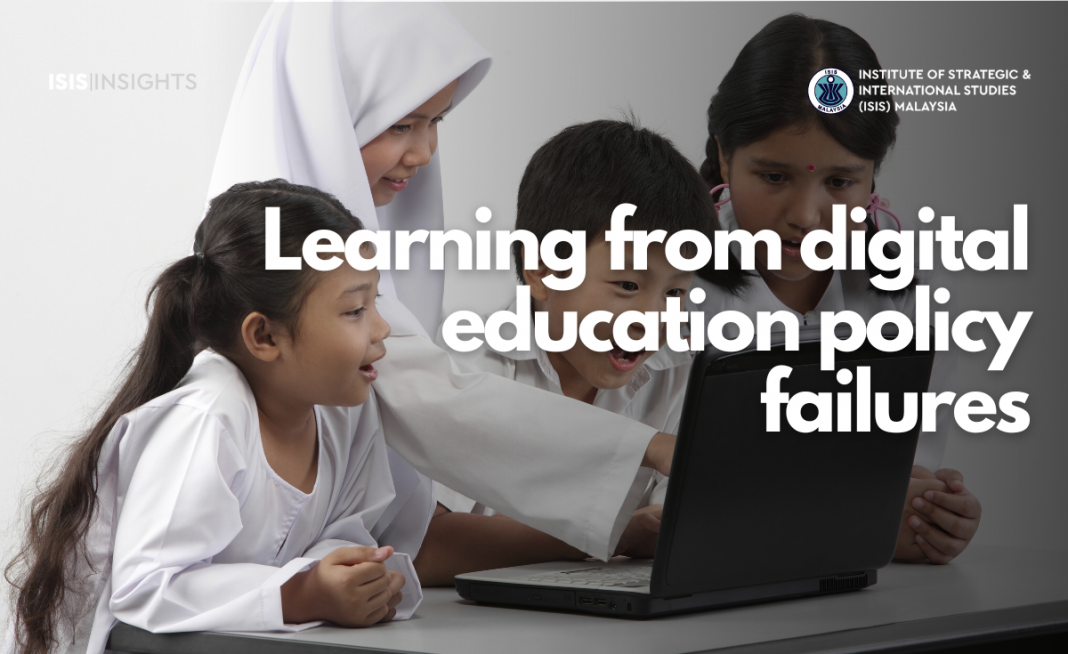Lofty goals of integrating fully ICT in schools often hit resource, planning roadblock
THE National Digital Education Policy is set to be implemented soon, according to Education Minister Fadhlina Sidek. The new education policy would focus on key matters related to digital literacy among pupils and educators, quality of digital education, and digital infrastructure in schools.
While we should laud the new policy, there are also lessons from the gaps of past digital education policies to ensure that no one is excluded.
One example is the Smart School initiative launched in 1997. This was a flagship application of Multimedia Super Corridor to integrate information and communication technology (ICT) into the educational sector. Among its key goals are making all schools smart by 2010 and that ICT would be integrated fully into the teaching and learning process by 2020.
Nonetheless, findings showed that the initiative did not go as smoothly as expected. One of the main issues was that schools found it difficult to maintain high-quality teaching and learning processes. This particularly concerns infrastructure in rural and remote areas with patchy access to the internet. Furthermore, a lack of long-term planning, including maintenance, was highlighted as another issue that led to schools making do with old ICT equipment.
Another problem was the shortage of skilled teachers, which contributed to the lagging ICT adoption in education. Other research suggests that the lack of ICT usage in classrooms could be influenced by training for teachers, collaborations among educators and pedagogies in classrooms. This implies that educators play a significant role ensuring an effective and efficient adaptation process, especially guiding and monitoring pupils.
A second lesson comes from the Digital Education Learning Initiative Malaysia (DELIMa) launched during the pandemic to accommodate online learning. Reports from recent years revealed that not all pupils benefited from it as digital devices did not reach eligible recipients.
Such examples show that giving pupils digital technologies does not necessarily guarantee effective usage and greater educational opportunities. Their competencies could be affected by socioeconomic circumstances, as indicated by the OECD based on the 2018 PISA scores. Not only was our score below the OECD average but the privileged scored better than the underprivileged.
This suggests a significant learning gap between pupils and digital skills, which could impact on learning outcomes and later, their long-term prospects in employment and higher education.
Third, the deployment of ICT equipment would not be sufficient if the telecommunication network is unstable. For instance, official data suggests that the share of internet access among households in Sabah and Sarawak remains lower than in the peninsula, with a gap in access to computers and fixed broadband. A pre-pandemic assessment also indicated that the accessibility rate to stable networks, such as 4G, was poorer in the less-developed states. This appears to be not in line with the Education Blueprint’s target whereby all schools will be equipped with access to 4G.
So broadly, the new National Digital Education Policy should consider all digital divide levels. Stakeholders need to look at access to ICT, the skills to reap benefits from ICT and the longer-term effects of digital disparities, such as employment and educational opportunities.
The digital education policy is already crafted but it should at least contain measures like:
- development of ICT competency framework for teachers that not only emphasises on acquisition of knowledge but also knowledge creation to improve educators’ self-efficacy in integrating technology;
- more funds allocated for ICT maintenance in underserved schools, particularly in states which face severe challenges in terms of digital education, such as Sabah and Sarawak and the east coast region; and,
- broader assessment of the existing digital education initiatives. For instance, a study found that the bring-your-own-device (BYOD) policy to school is helpful for those in Kuala Lumpur as they have sufficient computer skills but not so for the underprivileged in rural and remote areas.
Malaysia has talked about incorporating ICT into education since 1997 but at the same time, the policies should focus on long-term prospects and be aligned with the Sustainable Development Goals (SDGs), particularly ensuring quality education and reduced inequalities.





